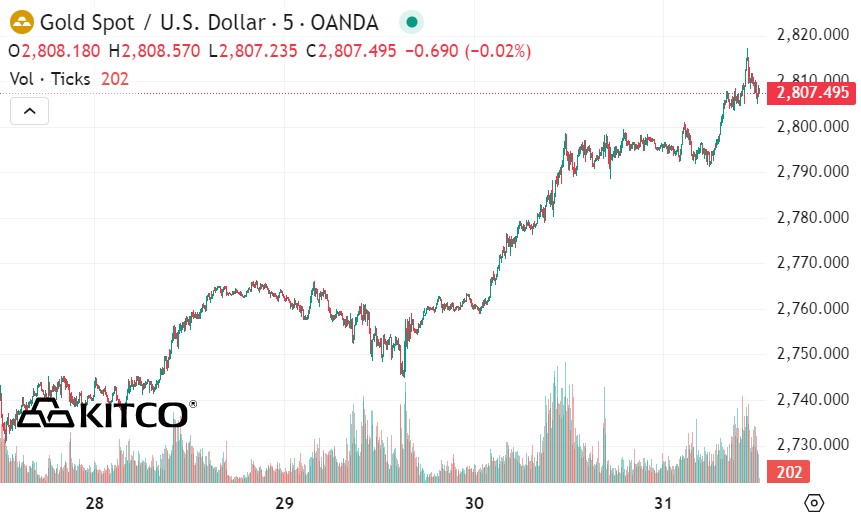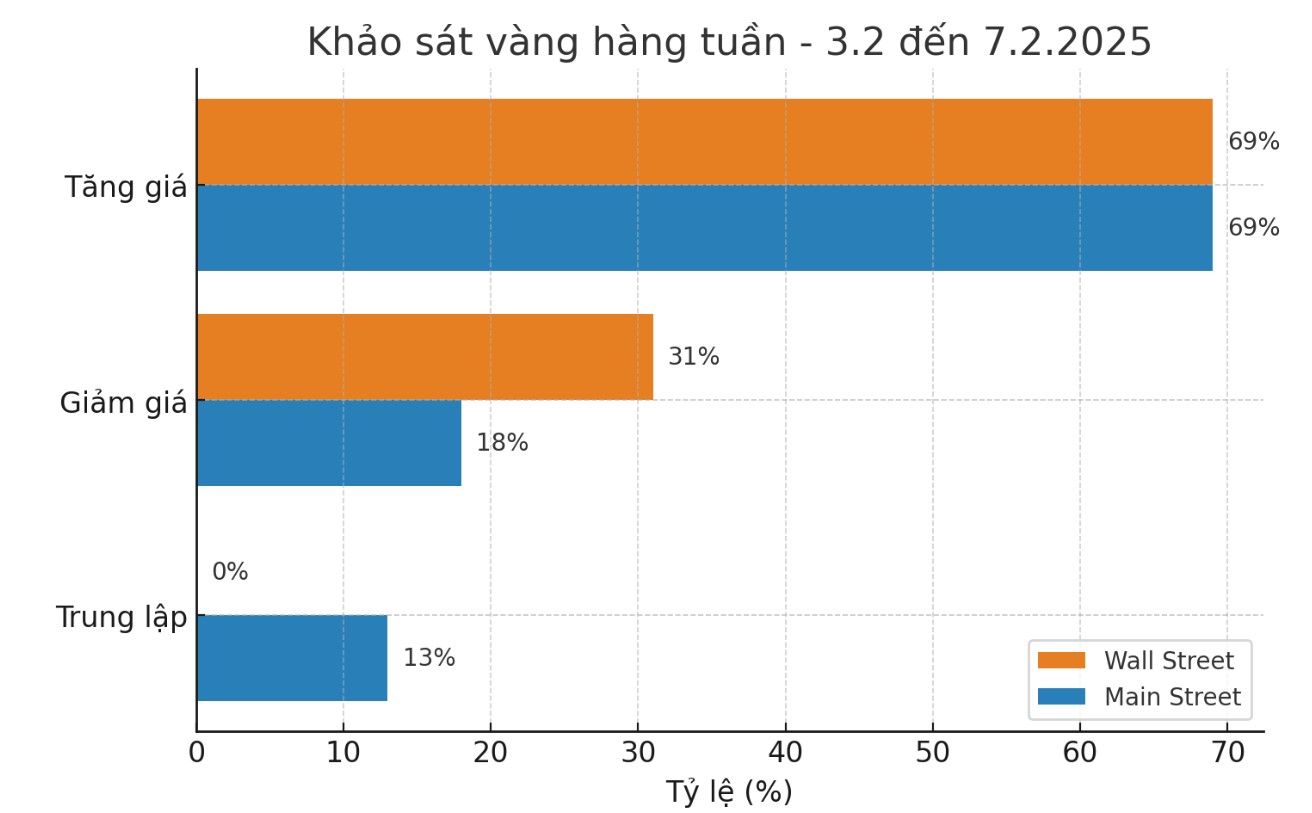Financial market turmoil and geopolitical tensions pushed gold prices to a new record high above $2,800 an ounce last week. Despite signs of mild overbought conditions in speculative positions, analysts say the precious metal remains well supported in the short term.
Gold's momentum indicators are entering overbought territory but remain below October's highs, David Morrison, senior analyst at Trade Nation, said in a note on Friday.
Not only is gold hitting an all-time high, Comex gold is also trading at a significant premium to spot prices - one of the factors driving the sharp price increase.
Gold and silver flows into New York vaults are surging at an unprecedented rate, as banks and investors are hoarding the metal as a hedge against the risk of US tariffs on Mexico and Canada - the world's two largest silver producers - under President Donald Trump.
According to commodity analysts at BMO Capital Markets, citing Swiss gold export data, 64.2 tonnes of gold flowed into Comex warehouses in New York in December 2024, up 19.5 times from 3.3 tonnes imported in December 2023.
“This is the largest monthly gold flow from Switzerland to the US since March 2022,” analysts said.
While gold and silver may face profit-taking pressure early this week as investors adjust to the new global trade backdrop, some experts advise keeping an eye on broader market trends.

“The spread between London and New York prices will eventually correct, but until there is clarity on tariffs, it has created a very profitable trade for those who can access physical gold and transport it into the US market,” said Ole Hansen, head of commodity strategy at Saxo Bank.
“Without tariffs, we could see some profit-taking. However, overall continued uncertainty and central bank buying are likely to help maintain support for the gold market,” Ole Hansen added.
Naeem Aslam - Chief Investment Officer at Zaye Capital Markets - remains bullish on gold.
“If the tariff concerns materialize, the US dollar could strengthen, which would typically put downward pressure on gold. However, if the situation is resolved quickly or without significant impact, gold could continue to rally.
Regardless, it will be important to watch how global investors react to these developments. A correction is possible, but it will be short-term, with broader market factors, including inflation concerns and central bank policy, playing a key role in maintaining gold’s value in the medium to long term,” he explained.

Experts say a gold price correction is not a bad thing, as many people see this as a buying opportunity.
Joy Yang, global head of index product management at MarketVector, predicts that gold prices may fluctuate due to speculative positioning. However, this does not change the long-term outlook for the precious metal.
“It’s not just about tariffs or whether they will be implemented. Sooner or later, there will be another surprise that the market didn’t see coming,” she said. “The market doesn’t know how to navigate this environment, so it makes sense for gold to stay above $2,800 an ounce.”
In addition, the market will closely monitor upcoming economic data to assess the monetary policy direction of the US Federal Reserve (FED).
After keeping interest rates unchanged, Fed Chairman Jerome Powell said the central bank is in no rush to cut interest rates as inflation pressures persist and the labor market remains strong.
With inflation data out, investors will turn their attention to the labor market next week, particularly the nonfarm payrolls report due on Friday.
Bill Adams, chief economist at Comerica Bank, noted that the cold snap in January could weigh on job growth, leading the market to expect more easing from the Fed.











